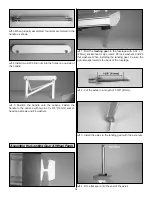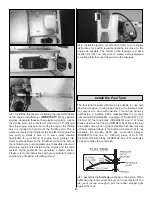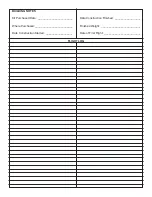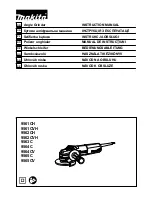
❏
1. Paint the cockpits flat black. After the paint has dried.
apply the instrument panel decal.
❏
2. If you will be installing a pilot, install it into the cockpit.
❏
3. The canopy can either be mounted to the fuselage with
screws or it can be glued with Z56 canopy glue. If you choose
to install the canopy with screws, look closely at the inside of
the cockpit walls and you will see two plywood plates on each
side of the fuselage. Position the canopy. Drill a 1/16" [1.6mm]
hole through the canopy and the fuselage at the location of the
plywood plates. Use four #2 x 3/8" [9.5mm] screws and #2 flat
washers to mount the canopy to the fuselage.
The box photographs show the location of the decals on the
airplane. Refer to the box for the exact placement of the
decals. The following tips may be useful for applying them.
1. Use scissors or a sharp hobby knife to cut the decals from
the sheet.
2. Be certain the model is clean and free from oily
fingerprints and dust. Prepare a dishpan or small bucket with
a mixture of liquid dish soap and warm water–about one
teaspoon of soap per gallon of water. Submerse the decal in
the soap and water and peel off the paper backing. Note:
Even though the decals have a “sticky-back” and are not the
water transfer type, submersing them in soap & water allows
accurate positioning and reduces air bubbles underneath.
3. Position decals on the model. Holding the decal down,
use a paper towel to wipe most of the water away.
4. Use a piece of soft balsa or something similar to
squeegee remaining water from under the decal. Apply the
rest of the decals the same way
❏
1. Turn on the transmitter and receiver and center the
trims. If necessary, remove the servo arms from the servos
and reposition them so they are centered. Reinstall the
screws that hold on the servo arms.
❏
2. With the transmitter and receiver still on, check all the
control surfaces to see if they are centered. If necessary, adjust
the clevises on the pushrods to center the control surfaces.
❏
3. Make certain that the control surfaces and the carburetor
respond in the correct direction as shown in the diagram. If any
of the controls respond in the wrong direction, use the servo
reversing in the transmitter to reverse the servos connected to
those controls. Be certain the control surfaces have remained
centered. Adjust if necessary.
Use a ruler to accurately measure and set the control throw
of each control surface as indicated in the chart that follows.
If your radio does not have dual rates, we recommend
setting the throws at the low rate setting.
Note: The throws are measured at the widest part of the
elevators, rudder and ailerons.
Set the Control Throws
Check the Control Directions
GET THE MODEL READY TO FLY
Apply the Decals
FINISHING TOUCHES
27










































